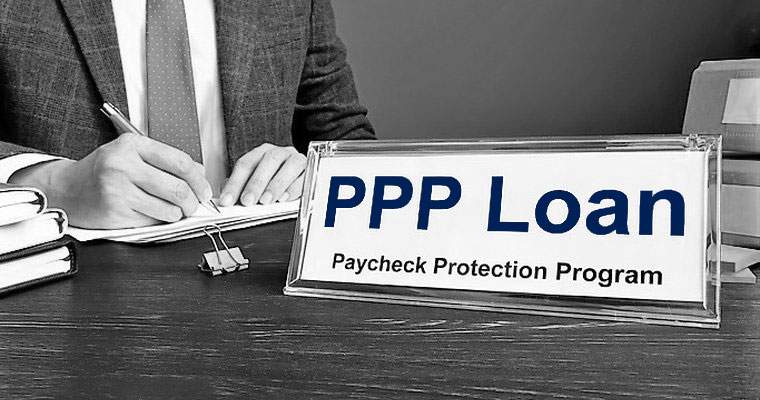A Guide to Securing a Second Draw PPP Loan

A Guide to Securing a Second Draw PPP Loan
The first Paycheck Production Program loan saved hundreds of thousands of jobs in 2020. However, as the pandemic dragged on throughout the year and loan funds were exhausted and forgiven, businesses continued to suffer. In December 2020, a new round of stimulus gave companies the ability to apply for a Second Draw PPP Loan, with some important distinctions from the first round. Overall maximum loan amounts were reduced, as were the sizes of the businesses eligible to apply. Businesses will need to show a drop in gross receipts. It further carved out some special categories which may allow qualified businesses to draw a larger loan. This guide will help businesses know if they qualify and what they will need to apply for this latest stimulus round.
Who Qualifies For a Second Draw PPP Loan?
Businesses must have suffered a 25% or more drop in gross receipts in 2020 from their previous gross receipts before the start of the pandemic.
Businesses must have obtained a First Draw PPP and used the total amount of that loan for authorized uses.
This round places more restrictions upon which businesses can apply. Businesses must have 300 or fewer employees. Further, political lobbyists, Congress members, and publicly traded companies are unable to receive this loan.
As with the first round, the business must have been in operation as of February 15, 2020, and certify that “current economic uncertainty makes this loan request necessary.” Independent contractors and self-employed business owners qualify but must show a profit from the business on their 2019 tax returns.
How Can a Business Calculate The 25% Gross Receipt Reduction?
For businesses that were in operation all of 2019, the borrower can choose any comparable quarter. Borrowers can also use annual 2019 gross receipts vs. 2020 gross receipts.
If a business was not in operation all of 2019, it must choose a quarter it was operational and show a 25% drop in gross receipts from one of the quarters it was operating in 2019 to any quarter of 2020.
If a business was not in operation during 2019, it must compare gross receipts from Q1 2020 with any other quarter of 2020.
It is important to note that a previously forgiven PPP loan or EIDL advance DOES NOT count towards a business’s gross receipts.
How Much Can The Business Borrow?

For most businesses, the calculation is the same as the first round. 2.5 times the average monthly payroll. However, for this round, the company can choose to use either 2019 OR 2020 payroll figures. However, the maximum allowable amount has been reduced to $2 million.
Increased loan amounts are available for “Accommodation and Food Service” businesses. These are businesses within NAICS Sector 72. These businesses can apply for 3.5 times the average monthly payroll for either 2019 or 2020. However, these loans are also capped at $2 million for this round.
What Paperwork is Needed?
Borrowers will need to justify the loan amount by supplying proof of wages paid. Depending upon the type of entity that seeks the loan, there are various forms required.
- S and C Corporations: State and federal wage filings from either 2019 or 2020, third-party payroll processor reports, or W-2s/W-3s. 2019 or 2020 1120-S or 1120 tax returns.
- Self Employed Individuals: will need to supply their 2019 or 2020 Schedule C or Schedule F if they are self-employed farmers or ranchers. If the business has employees, state and federal wage filings from either 2019 or 2020 will be required as well.
- Non-Profits: State and federal wage filings from either 2019 or 2020, third-party payroll processor reports, or W-2s/W-3s along with IRS Form 990 Part IX.
- Partnerships: State and federal wage filings from either 2019 or 2020, third-party payroll processor reports, or W-2s/W-3s along with 2019 or 2020 Schedule K-1 (Form 1065).
Borrowers will need to supply proof that the business was operating on February 15, 2020. Documentation is identical to that above but must be from a pay period which covered February 15, 2020. For self-employed borrowers, an invoice, bank statement, or book of record will be required to establish that the borrower was operating on February 15, 2020.
Finally, if the loan amount requested is greater than $150,000, borrowers will need to supply proof of a decrease in gross receipts. Borrowers can supply any of the following:
- Quarterly Financial Statements: If the financial statements fail to specify items counted in gross receipts, the borrower needs to annotate which lines apply. Further, audited financial statements must be supplied. If they have not been audited, the borrower must attest to their veracity by signing and dating the first page and initialing all other pages.
- Quarterly or Monthly Bank Statements: If it is unclear, the borrower must annotate which deposits are part of the business’s gross receipts and which are not. For example, make sure to exclude the initial PPP deposit since it is not considered part of the business’s gross receipts.
- Annual Income Tax Filings: For companies choosing to use an annualized accounting, simply supplying the 2019 and 2020 tax returns can show the satisfaction of this requirement.
Borrowers requesting $150,000 or less do not need to supply this documentation when they submit their application but will need to have it on hand to achieve forgiveness or anytime the SBA requests it.
A Guide to Securing a Second Draw PPP Loan was created to make the process simpler to any business owner wanting to get help and ultimately apply. More info can be obtained from the Small Business Administration’s website.
When Can A Business Apply?
Right now. Applications began being accepted on January 19th and will continue through March 31, 2021. As of January 31, $210 billion remained available, and the SBA estimates the funds will last through March, but it is certainly better to act fast to secure a Second Draw PPP Loan.
If you found A Guide to Securing a Second Draw PPP Loan, this article will also be beneficial: How to apply for PPP loan forgiveness.

